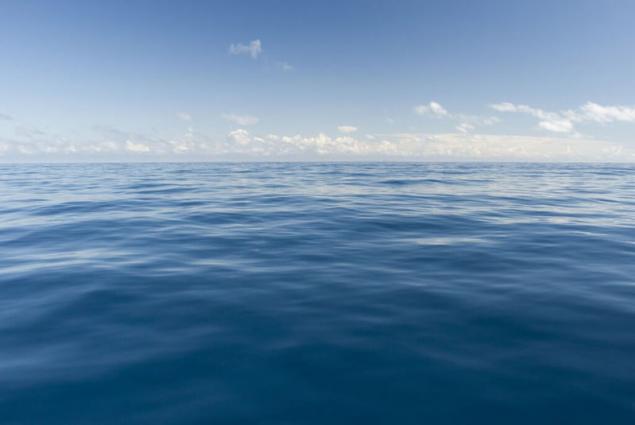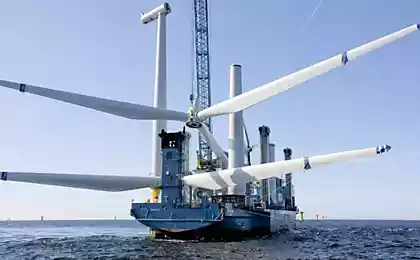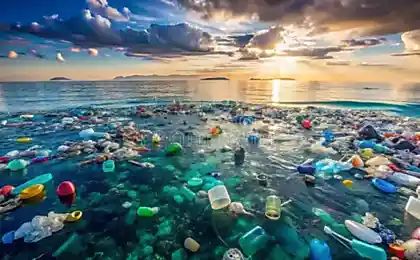445
Nuclear fuel from the ocean can provide energy for thousands of years
Using new collection method, scientists from Stanford University were able to identify three times more uranium from the ocean for 11-hour period than previously possible. This method can be an environmentally friendly alternative to current methods of mining uranium and make nuclear energy more attractive energy option.
Let's look at the truth. Nuclear energy is not going anywhere anytime soon. The international atomic energy Agency has even predicted that the total production of nuclear energy will increase by 68 percent over the next 15 years. And if we leave aside the debate on the topic of whether nuclear energy is good alternative to fossil fuels, the process of production of its main ingredient never friendly towards the environment.

This ingredient is uranium is a highly radioactive isotope that can be used for boiling water and creating steam. This steam is further commonly used to generate electricity. There are about 450 nuclear power plants using uranium, which is about 60 000 tonnes of heavy metal annually. This is a fairly common element, but the main question is that uranium is mined due to the explosion of a giant hole in the earth's crust and subsequent extraction of the metal from the resulting lumps.
To fix this process, a team of scientists from Stanford University in California have developed a better solution. The group persistently sought environmentally friendly alternatives to extraction of uranium raw material, therefore, developed a method to retrieve a resource from the ocean. The results of their work were published in Nature.
Believe it or not, but in the Earth's oceans a lot of uranium. The problem is the level of concentration: it is very low. "Concentration of tiny, one grain of salt per liter of water," says Yi Cui, a researcher of Stanford. "But the oceans are so big that if we can remove these trace quantities cost-effectively, the supply will be infinite."
When uranium comes into contact with the oxygen in the ocean, it forms a compound of uranium. The researchers plan to collect huge stockpiles using amidoxen, the connection, pulling only the uranium from the water. Amidoximes cover a couple of carbon electrodes, which can accumulate giant amounts of uranium.

Scientists have subjected their method to the test and found that I was able to extract three times more uranium during the 11-hour period, when compared with their previous method, which was used only ledoxina covered with brush.
Although this study shows, as far as feasible may be the collection of uranium, it is necessary to conduct many more studies that these methods can be applied EN masse. Unfortunately, currently it is much easier to extract the uranium from the land than from the ocean.
In addition, there are arguments about whether nuclear power is a good alternative to fossil fuels. Although the process is carbon-free, the conversion of uranium to electricity creates lots of harmful waste that are hard to break. The accident at the nuclear power plants also cannot be prevented — we all remember the recent event at Fukushima.
If we discard sentiment and strictly look at alternatives to carbon-free energy production, nuclear energy does not seem like a bad choice if we can mitigate its shortcomings. Well, at least we know that research is being conducted on the subject of how to rid us of harmful waste, once and for all. published
P. S. And remember, only by changing their consumption — together we change the world! ©
Source: hi-news.ru/research-development/yadernoe-toplivo-iz-okeana-mozhet-obespechit-energiej-na-tysyachi-let.html
Let's look at the truth. Nuclear energy is not going anywhere anytime soon. The international atomic energy Agency has even predicted that the total production of nuclear energy will increase by 68 percent over the next 15 years. And if we leave aside the debate on the topic of whether nuclear energy is good alternative to fossil fuels, the process of production of its main ingredient never friendly towards the environment.

This ingredient is uranium is a highly radioactive isotope that can be used for boiling water and creating steam. This steam is further commonly used to generate electricity. There are about 450 nuclear power plants using uranium, which is about 60 000 tonnes of heavy metal annually. This is a fairly common element, but the main question is that uranium is mined due to the explosion of a giant hole in the earth's crust and subsequent extraction of the metal from the resulting lumps.
To fix this process, a team of scientists from Stanford University in California have developed a better solution. The group persistently sought environmentally friendly alternatives to extraction of uranium raw material, therefore, developed a method to retrieve a resource from the ocean. The results of their work were published in Nature.
Believe it or not, but in the Earth's oceans a lot of uranium. The problem is the level of concentration: it is very low. "Concentration of tiny, one grain of salt per liter of water," says Yi Cui, a researcher of Stanford. "But the oceans are so big that if we can remove these trace quantities cost-effectively, the supply will be infinite."
When uranium comes into contact with the oxygen in the ocean, it forms a compound of uranium. The researchers plan to collect huge stockpiles using amidoxen, the connection, pulling only the uranium from the water. Amidoximes cover a couple of carbon electrodes, which can accumulate giant amounts of uranium.

Scientists have subjected their method to the test and found that I was able to extract three times more uranium during the 11-hour period, when compared with their previous method, which was used only ledoxina covered with brush.
Although this study shows, as far as feasible may be the collection of uranium, it is necessary to conduct many more studies that these methods can be applied EN masse. Unfortunately, currently it is much easier to extract the uranium from the land than from the ocean.
In addition, there are arguments about whether nuclear power is a good alternative to fossil fuels. Although the process is carbon-free, the conversion of uranium to electricity creates lots of harmful waste that are hard to break. The accident at the nuclear power plants also cannot be prevented — we all remember the recent event at Fukushima.
If we discard sentiment and strictly look at alternatives to carbon-free energy production, nuclear energy does not seem like a bad choice if we can mitigate its shortcomings. Well, at least we know that research is being conducted on the subject of how to rid us of harmful waste, once and for all. published
P. S. And remember, only by changing their consumption — together we change the world! ©
Source: hi-news.ru/research-development/yadernoe-toplivo-iz-okeana-mozhet-obespechit-energiej-na-tysyachi-let.html
Renault displays in sale the updated version of the Zoe electric car
The pelvic segment of muscular armor: vital fears























